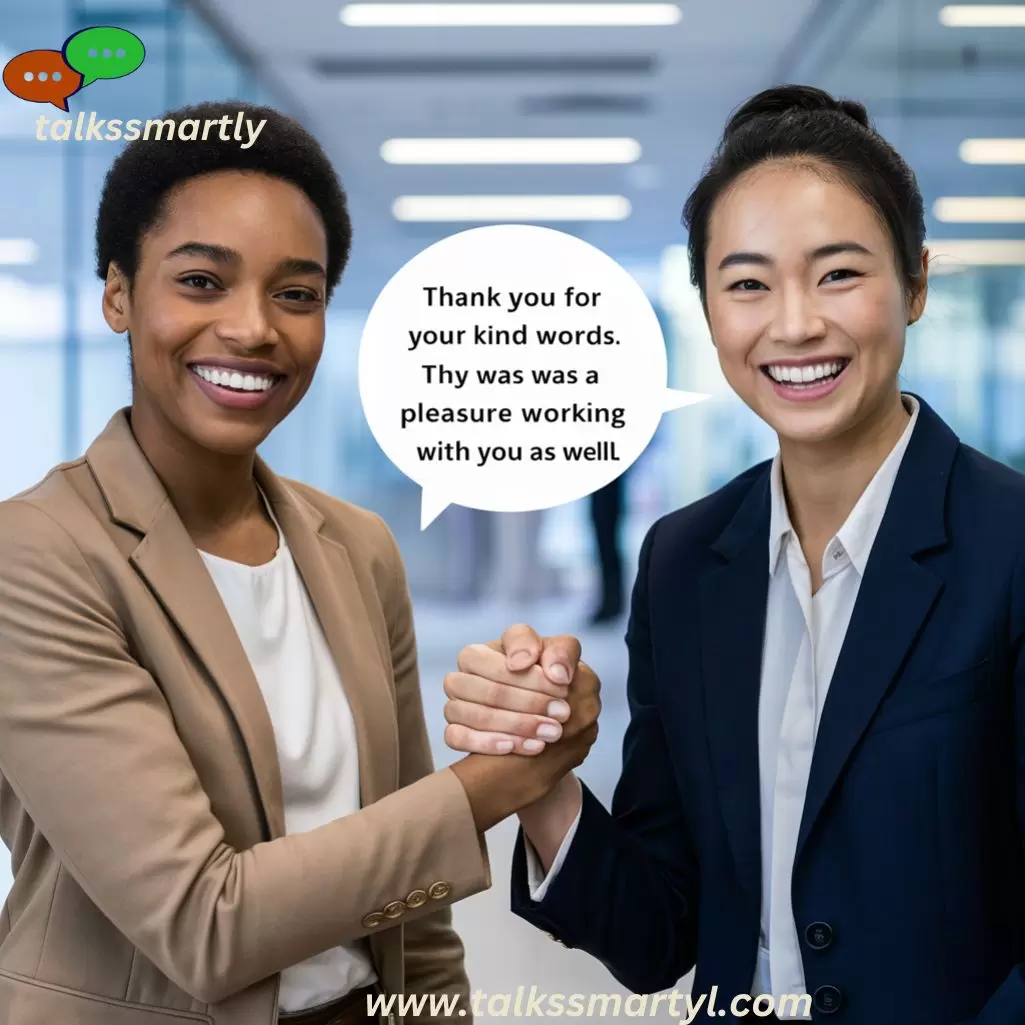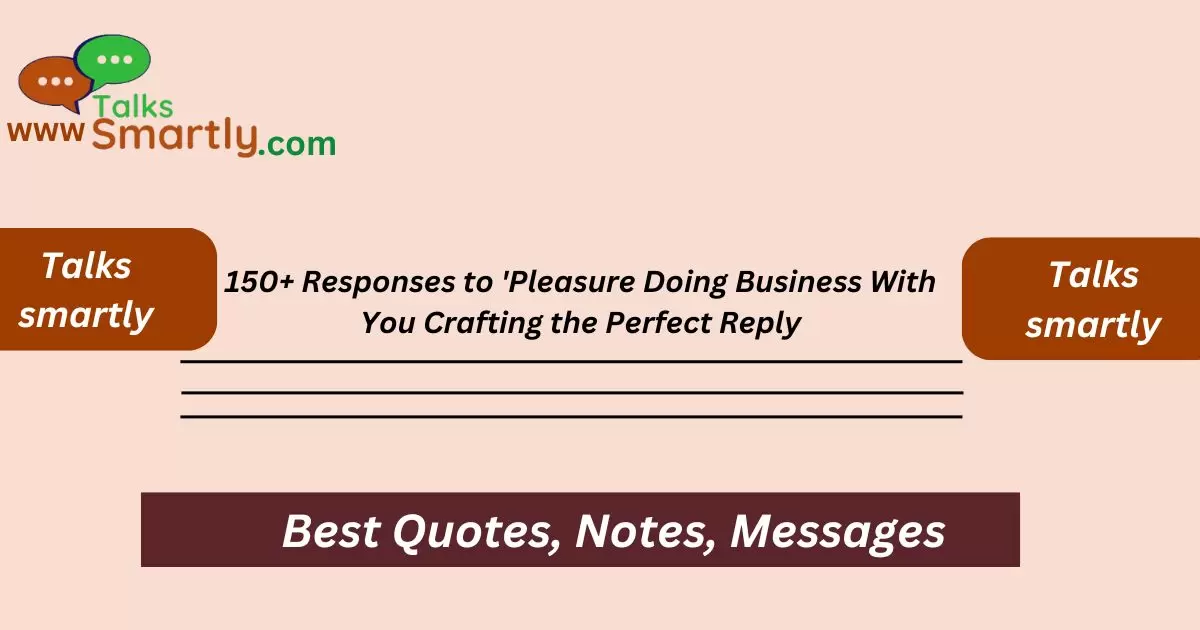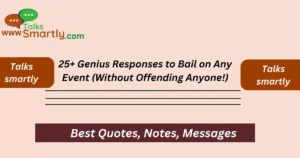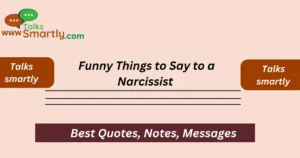“Crafting a thoughtful response to ‘Pleasure doing business with you’ enhances professional relationships and sets a positive tone for future interactions.”
In the world of business, communication is key. One common phrase you’ll encounter is “Pleasure doing business with you.” This phrase is often used to end a conversation on a positive note, signaling a successful interaction. But how should you respond? Your reply can impact the relationship and set the tone for future interactions.
Understanding how to respond effectively can make a big difference in how you’re perceived. Whether you’re a business owner, customer service representative, or just someone looking to improve their communication skills, crafting the perfect reply is essential.
This article will explore over 150 responses to “Pleasure doing business with you,” helping you choose the best one for various situations. We’ll also cover why your response matters, when to avoid overly familiar replies, and tips for crafting an effective response.
Understanding the Phrase ‘Pleasure Doing Business With You’
- Definition: The phrase is a polite way to end a conversation or transaction.
- Intent: It shows appreciation for the business interaction.
- Context: Often used in professional settings.
- Tone: Typically positive and courteous.
- Formality: Suitable for both formal and informal exchanges.
- Alternative Phrases: “Great working with you” or “It’s been a pleasure.”
- Cultural Differences: Variations in how the phrase is used globally.
- Perceived Meaning: Can convey sincerity or formality.
- Business Etiquette: Reflects good manners and professionalism.
- Response Expectations: Recipients usually respond with a similarly polite remark.
- Impact on Relationships: Sets a positive tone for future interactions.
- Common Usage Scenarios: After completing a transaction or concluding a meeting.
- Psychological Impact: Can leave a lasting positive impression.
- Variations in Business Settings: Different industries may have unique practices.
- Follow-Up Importance: How to continue the conversation positively.
Responses to “Pleasure Doing Business With You”
- “Thank you! The pleasure was mine.”
- “I appreciate your business. Looking forward to our next meeting.”
- “Likewise! It was a great experience working with you.”
- “Thank you! I’m glad we could collaborate.”
- “It’s been a pleasure. See you next time!”
- “Thanks! I enjoyed working with you as well.”
- “The pleasure was mine. Let’s keep in touch.”
- “I’m grateful for the opportunity. Looking forward to future projects.”
- “Thank you for your professionalism. It was a pleasure.”

- “I appreciate the opportunity. It’s been a smooth transaction.”
- “Glad to hear that. It was a positive experience for me too.”
- “Thank you! I’m happy with how things turned out.”
- “The pleasure was mutual. Until next time!”
- “I enjoyed our interaction. Thanks for your business!”
- “Thank you for the kind words. It was great working with you.”
Why Your Response Matters
- Professionalism: Shows that you value the interaction.
- Building Relationships: Can strengthen future business connections.
- Customer Satisfaction: Positive responses enhance the client’s experience.
- Reputation: A well-crafted reply contributes to a good reputation.
- Tone Setting: Sets the tone for future interactions.
- Conflict Avoidance: A polite response can prevent misunderstandings.
- Trust Building: Builds trust and confidence in your business.
- Customer Retention: Encourages repeat business.
- Feedback Mechanism: Allows you to gauge the other party’s satisfaction.
- Brand Image: Reflects your company’s values and professionalism.
- Personal Touch: Adds a personal element to professional interactions.
- Resolution of Issues: Can help in addressing and resolving any issues.
- Improving Communication: Enhances overall communication skills.
- Positive Impression: Leaves a lasting positive impression.
- Encouraging Future Engagement: Promotes ongoing business interactions.
When to Avoid Overly Familiar Responses
- Formal Settings: Stick to professional replies.
- New Business Relationships: Keep it neutral to avoid presumptions.
- Inappropriate Context: Avoid casual responses in serious situations.
- Cultural Sensitivities: Be mindful of different cultural expectations.
- Complex Transactions: Maintain professionalism in high-stakes interactions.
- Uncertain Outcomes: Wait until the deal is confirmed before getting too personal.
- Disputes: Avoid familiarity when dealing with conflicts.
- Senior Executives: Maintain a respectful tone with high-level contacts.
- First Impressions: Keep it formal when first meeting someone.
- Legal or Formal Documents: Stick to formal responses in legal contexts.
- High-Value Clients: Be cautious with familiarity in high-value transactions.
- Crisis Situations: Keep responses professional during crises.
- New Partnerships: Avoid overly familiar responses until the relationship is established.
- Formal Agreements: Maintain formality in official agreements.
- High-Stress Scenarios: Keep responses neutral and professional in stressful situations.
Best Replies to “I Had a Great Time with You” Text
Responding to Variations of the Phrase
- “It’s been a pleasure working with you”: Respond with a similar sentiment.
- “Great working with you”: Use a positive response to match the enthusiasm.
- “Nice doing business with you”: Acknowledge and reciprocate the sentiment.
- “Wonderful working with you”: Express appreciation and optimism for future dealings.
- “Enjoyed our business interaction”: Confirm the positive experience.
- “I appreciate your business”: Respond with gratitude and eagerness for future interactions.
- “Pleasure doing business with you too”: Mirror the positive tone.
- “It’s been a pleasure on my end as well”: Show mutual satisfaction.
- “Thanks for the opportunity”: Appreciate the chance to work together.
- “I’ve enjoyed our time working together”: Reinforce the positive experience.
- “The pleasure has been mine”: Confirm your satisfaction with the interaction.
- “Glad to hear you enjoyed it too”: Reflect back the positive sentiment.
- “It was a positive experience for me as well”: Show mutual benefit.
- “I look forward to working with you again”: Express eagerness for future projects.
- “I value our business relationship”: Emphasize the importance of the connection.
Handling Negative or Mixed Responses
- Acknowledge and Address Issues: Recognize any problems and offer solutions.
- Stay Professional: Maintain a courteous tone despite the negativity.
- Apologize if Necessary: Offer a sincere apology if there was an issue.
- Seek Feedback: Ask for specific feedback to improve future interactions.
- Offer Resolution: Propose ways to address any concerns or issues.
- Express Understanding: Show empathy towards any dissatisfaction.
- Clarify Misunderstandings: Address any potential misunderstandings.
- Maintain a Positive Tone: Keep your response positive and forward-looking.
- Provide Additional Information: Offer more details if needed to clear up issues.
- Reiterate Commitment: Emphasize your commitment to resolving any problems.
- Follow Up: Ensure follow-up actions are taken to address concerns.
- Be Transparent: Be honest about any limitations or issues.
- Avoid Defensive Language: Keep the response constructive rather than defensive.
- Offer a Discount or Incentive: Consider providing a discount or incentive as a goodwill gesture.
- Document the Interaction: Keep a record of the communication for future reference.
Crafting Your Response: Tips and Best Practices
- Be Authentic: Ensure your response feels genuine.
- Match the Tone: Align your tone with the initial interaction.
- Keep It Brief: A concise reply is often more effective.
- Use Positive Language: Opt for words that convey appreciation and satisfaction.
- Personalize Your Reply: Tailor your response to the specific interaction.
- Be Clear: Ensure your message is straightforward and easy to understand.
- Maintain Professionalism: Even in casual settings, keep a professional tone.
- Express Gratitude: Show appreciation for the opportunity to work together.
- Reflect the Sentiment: Echo the positive sentiment of the original phrase.
- Avoid Overly Formal Responses: Keep it appropriate to the context of the interaction.
- Be Responsive: Reply in a timely manner.
- Check for Errors: Proofread your response to avoid mistakes.
- Consider the Relationship: Adapt your response based on your relationship with the recipient.
- Use Positive Reinforcement: Reinforce positive aspects of the interaction.
- Follow Up if Needed: If applicable, follow up with additional information or actions.
Examples of Effective Responses
- “Thank you for your kind words. It was a pleasure working with you as well.”

- “I appreciate your feedback. Looking forward to future projects together.”
- “Glad to hear you had a positive experience. It was great working with you.”
- “Thank you for your professionalism. I enjoyed our interaction.”
- “It was a pleasure on my end too. Let’s stay in touch for future opportunities.”
- “I’m happy to hear you feel that way. The pleasure was all mine.”
- “Thank you! I’m looking forward to our next collaboration.”
- “It’s been wonderful working with you. See you at our next meeting.”
- “Thanks for the positive feedback. I enjoyed working together as well.”
- “The pleasure was mutual. I hope to work with you again soon.”
- “I’m glad you enjoyed the experience. I look forward to our future projects.”
- “Thank you for the opportunity. I’m pleased with how everything went.”
- “It was a pleasure working with you too. Let’s keep the momentum going.”
- “I appreciate your business. Looking forward to more successful collaborations.”
- “Thank you! It’s been a great experience working together. See you soon!”
The Role of Tone and Language in Responses
- Professionalism: Ensure the tone remains professional, especially in formal contexts.
- Positivity: Use positive language to reflect appreciation.
- Clarity: Be clear and straightforward in your communication.
- Warmth: Add a touch of warmth where appropriate to build rapport.
- Formality: Adjust the formality based on the context and relationship.
- Respect: Show respect through polite and considerate language.
- Empathy: Demonstrate understanding and empathy in your tone.
- Enthusiasm: Reflect enthusiasm to match the original sentiment.
- Consistency: Maintain a consistent tone that aligns with your company’s values.
- Personalization: Tailor your language to fit the specific interaction.
- Feedback Sensitivity: Be sensitive to any feedback received in your response.
- Avoiding Jargon: Use simple language to ensure clarity.
- Encouraging Future Interaction: Use language that promotes ongoing engagement.
- Positive Reinforcement: Reinforce positive aspects of the interaction.
- Professional Boundaries: Maintain appropriate boundaries in your responses.
Using Feedback to Improve Future Interactions
- Collect Feedback: Actively seek feedback from clients or colleagues.
- Analyze Responses: Review feedback to identify areas for improvement.
- Implement Changes: Make necessary adjustments based on feedback.
- Acknowledge Feedback: Show appreciation for constructive criticism.
- Follow Up: Address any concerns raised in feedback.
- Adapt Communication: Modify your responses based on feedback insights.
- Continuous Improvement: Use feedback as a tool for ongoing improvement.
- Solicit Additional Input: Ask for more feedback to refine your approach.
- Measure Impact: Assess how changes based on feedback affect interactions.
- Share Best Practices: Share successful strategies with your team.
- Training and Development: Use feedback to guide training efforts.
- Monitor Trends: Look for common themes in feedback to address recurring issues.
- Maintain Open Dialogue: Keep communication channels open for feedback.
- Encourage Honest Feedback: Create an environment where honest feedback is valued.
- Evaluate Effectiveness: Regularly evaluate the effectiveness of changes made.
Answers to Key Questions
What should I say if I didn’t enjoy the business interaction?
Acknowledge the feedback politely and offer solutions or improvements.
Can I use a casual response in a formal business setting?
It’s best to match the tone of the original interaction; casual responses should be reserved for informal settings.
How do I respond if the other party doesn’t seem satisfied?
Address their concerns directly and offer to resolve any issues.
What’s the best way to respond to a client who frequently uses this phrase?
Maintain consistency and professionalism in your responses, while showing appreciation for their business.
How can I improve my response over time?
Seek feedback, analyze interactions, and adjust your approach based on insights and experiences.
Conclusion
In summary, crafting the perfect response to “Pleasure doing business with you” is crucial for maintaining and enhancing professional relationships. Your reply not only reflects your professionalism but also helps in building stronger connections with clients and colleagues.
By understanding the intent behind the phrase and choosing an appropriate response, you set a positive tone for future interactions.
Whether you’re addressing positive feedback, handling mixed emotions, or responding to negative comments, your reply can significantly impact the overall experience.
Utilize the tips and examples provided to tailor your responses effectively and ensure that your communication is both respectful and engaging. Remember, a well-crafted response demonstrates your commitment to excellent service and can foster lasting business relationships.
By continuously improving your communication skills, you can contribute to more successful and satisfying professional interactions.

Hi, I’m Lauren Reynolds, owner of Talks Smartly.
We specialize in wishes, thank you messages, and thoughtful responses for all occasions.
Whether it’s a birthday wish or a heartfelt thank you, we’re here to make your messages shine.
Join us at Talks Smartly and let your words leave a lasting impression.”










